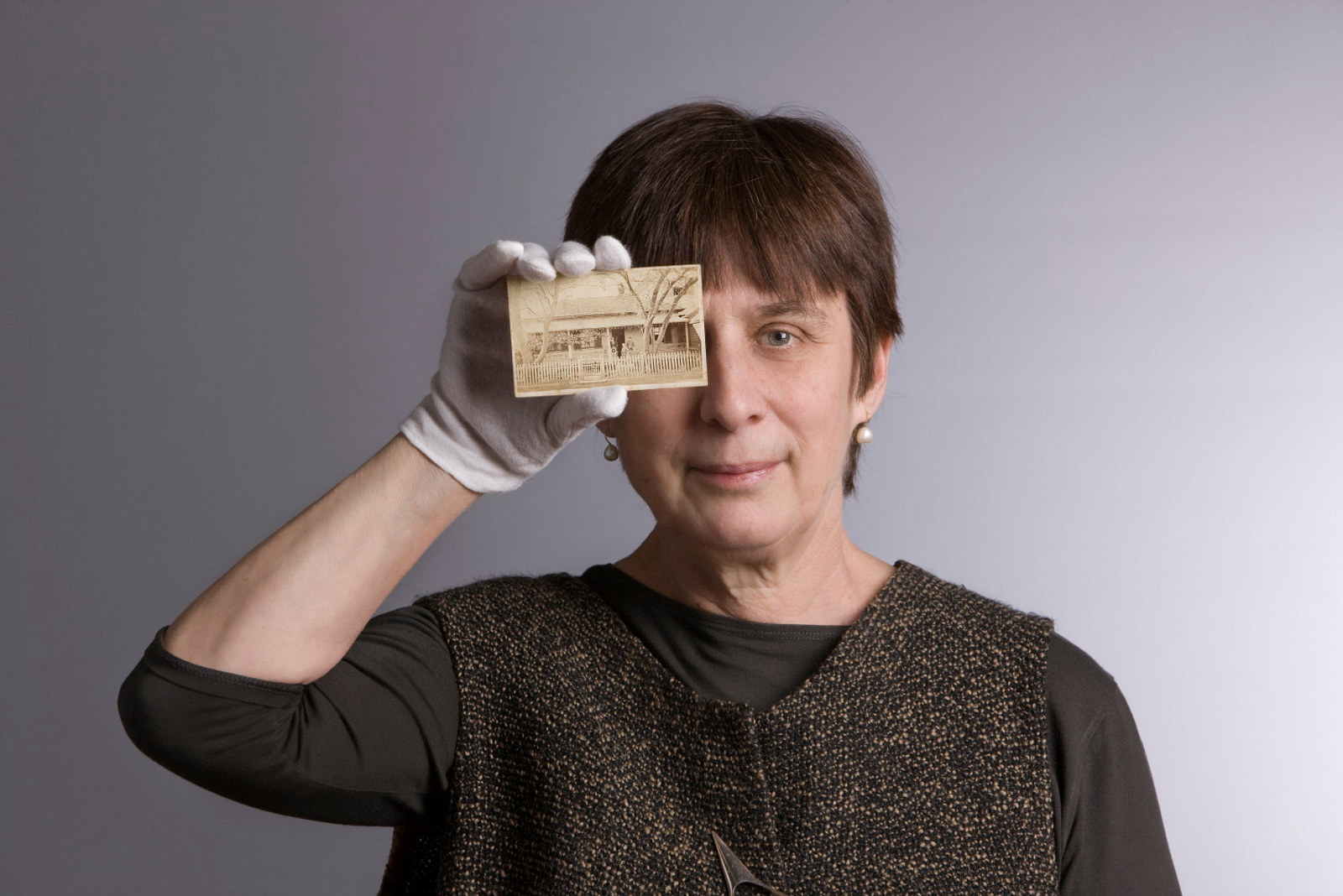Bessie Rouse’s scrap album & the first Australian Christmas cards
A nineteenth-century scrap album, carefully stored in a bookcase at Rouse Hill Estate, holds hidden treasure – if you know what you’re looking at.
The scrap album
The creation of scrap albums was a commonplace feminine activity in genteel households in the Victorian age.
Mid-century examples of the genre might include small botanical watercolours and topographical sketches as well as pages of hand-written sentimental verse, newspaper cuttings, photographs, and perhaps a lacy printed valentine. The rapid growth of chromolithographic printing in the second half of the nineteenth century meant that later scrap albums often consisted entirely of personal assemblages of printed ephemera, including colourful scraps specially produced for the scrapbook market and intended for use by young girls. Adult compilers, like Bessie Rouse, nee Buchanan (1843-1924), the mistress of Rouse Hill House from her marriage in 1874 to Edwin Stephen Rouse (1849-1931) until her death in 1924, used scrap albums to display mementos of friendship and familial love. She created a number of albums during her lifetime, including one assembled in the 1880s, filled mostly with Christmas and New Year greeting cards.
On the first page of the album is a chromolithographic New Year’s card, 17.5 x 12.5 cm in size, published by the Sydney printing firm Turner & Henderson in December 1880. The card depicts a spray of Australian wildflowers, each flower identified botanically. It was one of 12 cards published by Turner & Henderson as an 'Australian Floral Series' and registered on 16 December 1880 under the provisions of the colonial New South Wales’ Copyright Act. The cards were registered as works of fine art, without greetings. The messages were overprinted later.
Australian Floral Cards
This was the second such series of Australian wildflower cards published by Turner & Henderson. Their first series, registered under the NSW Copyright Act on 20 November 1879 as ‘Australian Floral Cards’, are generally considered to have been the first published Australian Christmas cards with specifically Australian subjects. The first series were small cards printed in an oblong format around 7x14 cm in size. We know from Turner & Henderson’s advertisements in the Sydney press that the series was based on paintings by Helena Forde, nee Scott (1832-1910), one of the best known of Australian-born artists and natural history illustrators in the second-half of the nineteenth century. The 1880 series were ‘drawn and coloured by Miss Scott’ - Harriet Scott (1830-1907) - Helena Forde’s sister.
Wishing you sweet enjoyment
Of Christmas pleasures
Bessie Rouse’s album has a second card from the 1880 series, with a Christmas message. There are also two cards – again one Christmas card and one New Year’s card - from a further set of 12 cards in the Australian Floral Series, produced for Christmas 1881. The cards in this third set are numbered 13 to 24 and each card is printed with the artist’s monogram HS.
John Sands
By 1881 another Sydney printing company, John Sands, had entered the Australian Christmas card market. In early 1881 the company held an art competition for original designs of Christmas and New Year’s cards, using Australian subjects only. The competition attracted hundreds of entries. A series of prizes were duly awarded, including a fourth prize to Mrs Helena Forde, and the entries were publicly exhibited at the Art Gallery in May. One of the prize winners was the Sydney artist Charles Henry Hunt (1857-1938). His design was described as a ‘thoroughly Australian picture’ and showed a ‘fairy-like little girl, who has evidently run up from a picnic party in the bush, proffering a Christmas pudding to a tired swagman who has just sat down under a shady tree to drink a pannikin of tea.’
[a] thoroughly Australian picture
Sydney Harbour views
In addition to publishing cards based on some of the prize-winning designs, John Sands also employed a lithographer name Sidney Sedgfield (1837-1889) to prepare for publication a series of views of Sydney Harbour from watercolour sketches specially drawn by the New-Zealand born artist John Clarke Hoyte (1835-1913). These were printed as small postcard sized Christmas cards. Bessie Rouse’s album includes one of these cards, a view of The Gap near South Head, taken from the Reserve above Watson's Bay.
Gibbs, Shallard & Co
Another Sydney printing and publishing firm, Gibbs, Shallard & Co also entered the Australian Christmas card market in 1881, announcing in the Illustrated Sydney News on 30 September 1881 that they were about to publish a series of ‘original floral Christmas and New Yard Cards from original designs by Colonial artists’, executed in the ‘best style of chromo-lithography’. The cards were reviewed with enthusiasm by the colonial press, thought to be
thoroughly Australian in character [and] admirably suited for sending to friends in old England, or elsewhere.
While John Sands discontinued production of Christmas cards after 1881, Gibbs, Shallard & Co published specifically Australian cards each year from 1881 until 1886, producing over that time a large number of designs. Their cards were generally more vibrant in colour than Sands’ and may have been more successful in the market. There is one example of their output in Bessie Rouse’s album, a card featuring a spray of Bursaria spinosa, a local Sydney wildlflower. It might be the card numbered 328 in the printer’s list published for the 1884-1885 season.
Gibbs, Shallard & Co also produced cards depicting birds, Australian scenery, even scenes of traditional Aboriginal life as well as irreverent comical scenes of kangaroos dressed as artists, emus smoking cigarettes etc, and still-life compositions of native flowers and decorative arts.
Photographs as Christmas cards
Although the cards published by Gibbs, Shallard & Co were undoubtedly original and well printed they could not compete in price - costing between sixpence and eighteen pence each - with imported chromolithographic cards which might cost as little as one penny. And by the end of the eighties there was a new vogue for cabinet photographs as Christmas cards. As early as September 1884 a photographer named James William Hemus (1860-1936), working at the San Francisco Palace of Art in George Street, Sydney, registered his copyright in a photograph which he described as 'the Sydney Christmas Card'.
The Manly Wild Flower Show
The final Australian Christmas card in Bessie Rouse’s album is an example of the cabinet photograph as Christmas card genre. It is a hand-coloured picture of the Wild Flower Show at Manly. The first such show was held in 1881, conceived as a fundraiser for the local churches. It soon became a fashionable annual event, growing ever larger so that by 1885 concerns were being raised that the bush around Sydney, especially the area around Narrabeen and Pittwater, was being ransacked to provide materials for the flower show. Rare orchids and rock lilies were being wiped out, ‘native tulips’ and waratahs decimated, and public reserves stripped of ‘their luxurious furnishing of staghorns and all the larger ferns’. The last show was held in 1899.
Bessie Rouse’s scrap album contains around 70 cards, making the Australian content just 10 per cent of the whole. It is impossible to say whether this is an accurate reflection of the market share of Australian produced Christmas cards in the decade of the 1880s but it is possible to say that the cards are now rare and that the album provides important examples of the key elements in the early history of Christmas cards in Australia.
Published on
Rouse Hill Estate stories
Browse all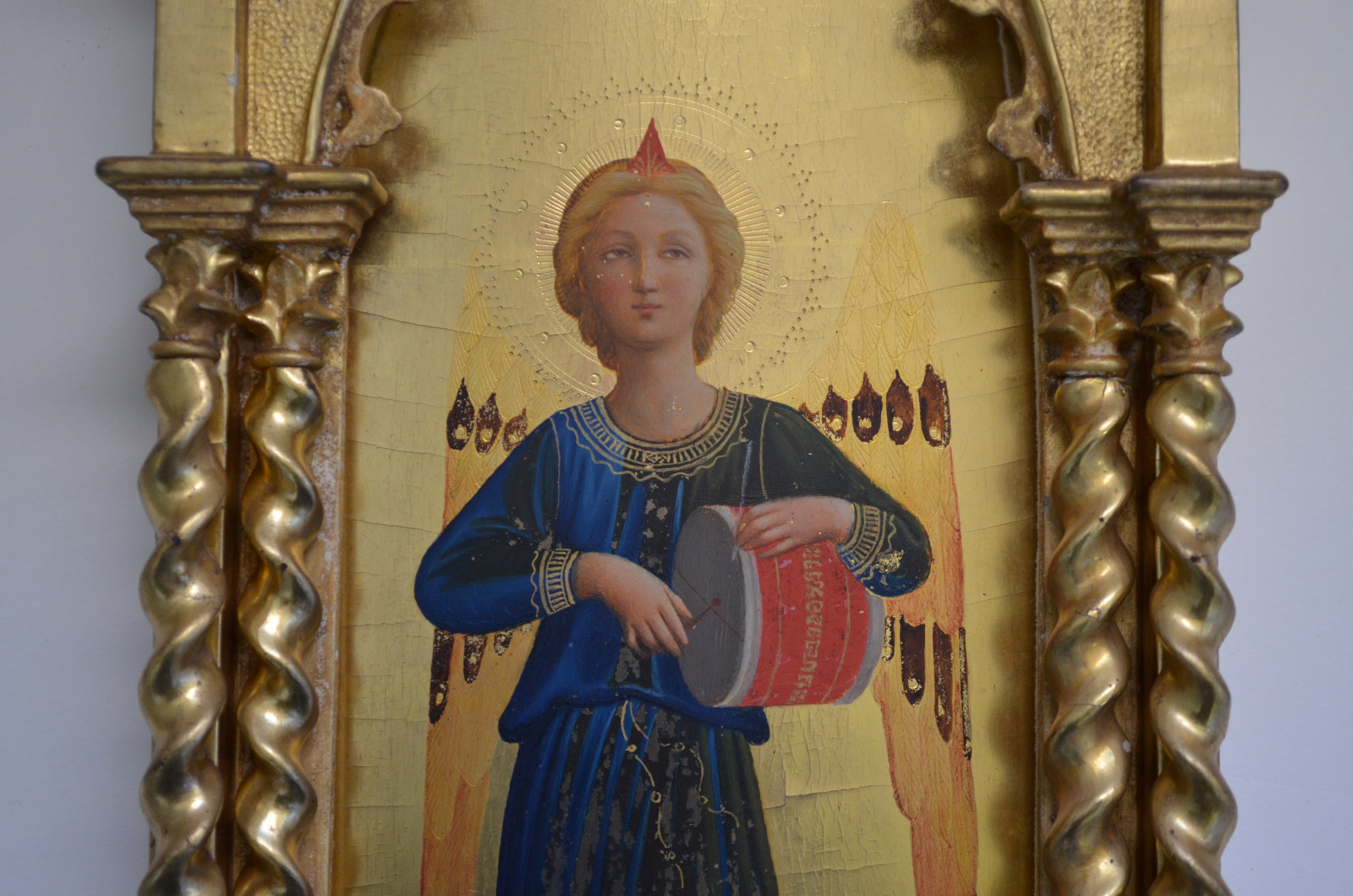
A Gothic Angel
In the drawing room at Rouse Hill your eye is instantly drawn to a small painting on the far wall; a figure of an angel in a shining gilt frame, acquired in the 1870s.
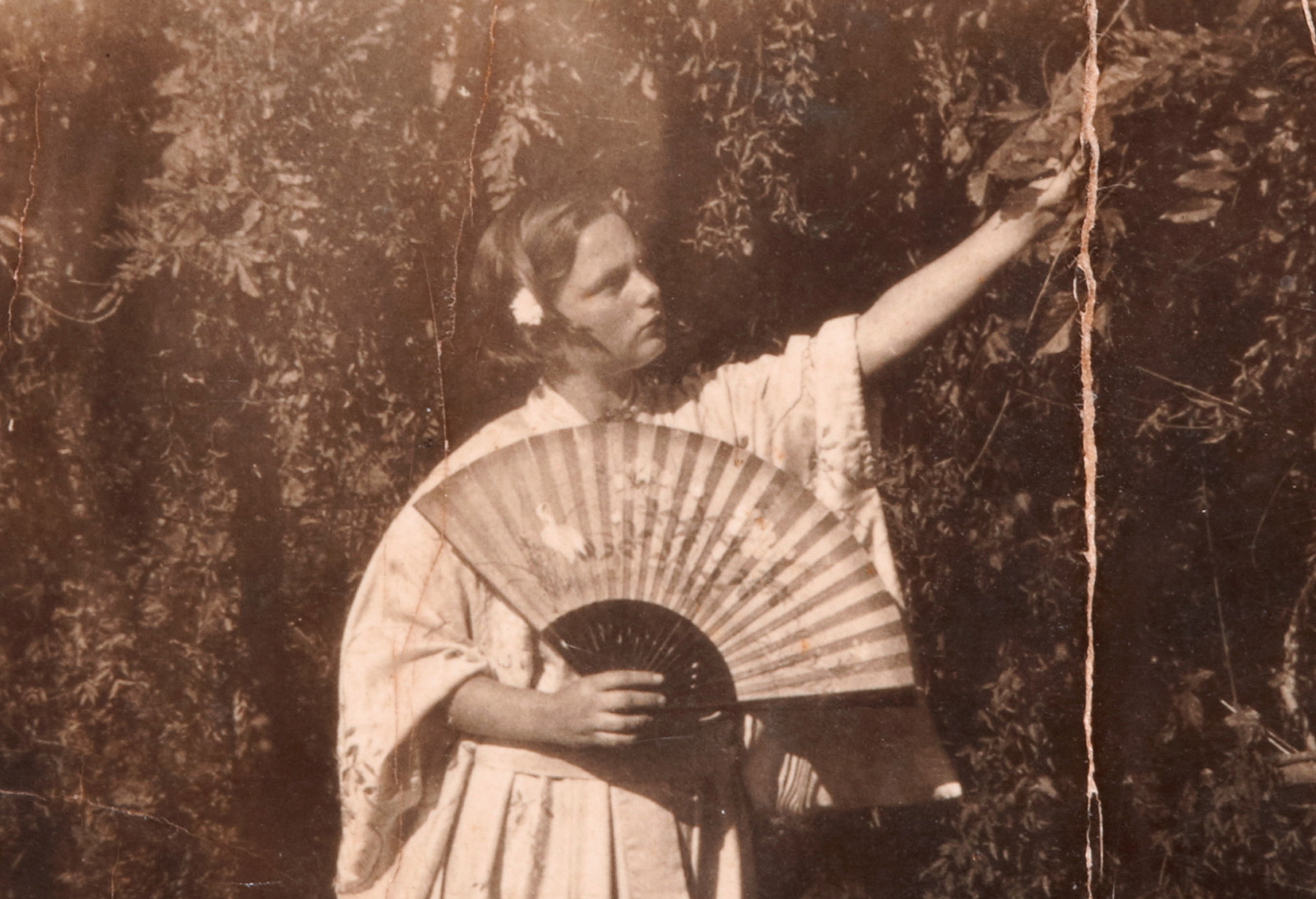
Keeping cool
Shading the face, fanning a fire into a blaze or cooling food, shooing away insects, conveying social status, even passing discreet romantic messages - the use of the fan goes far beyond the creation of a breeze.
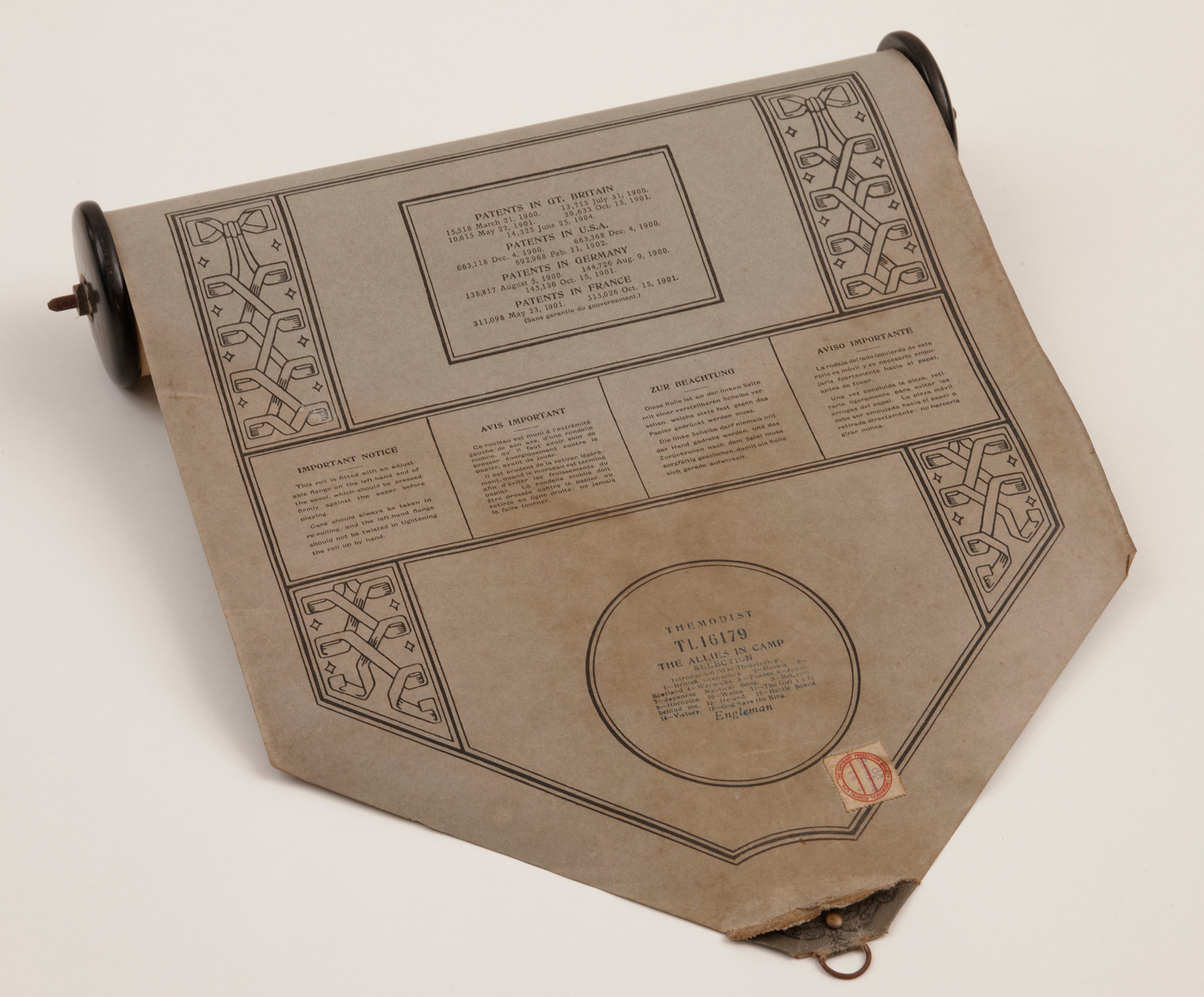
WW1
The Allies in camp music roll
Rouse Hill house boasts a fine pianola, a player piano, which came into the house just a few years before the outbreak of World War I
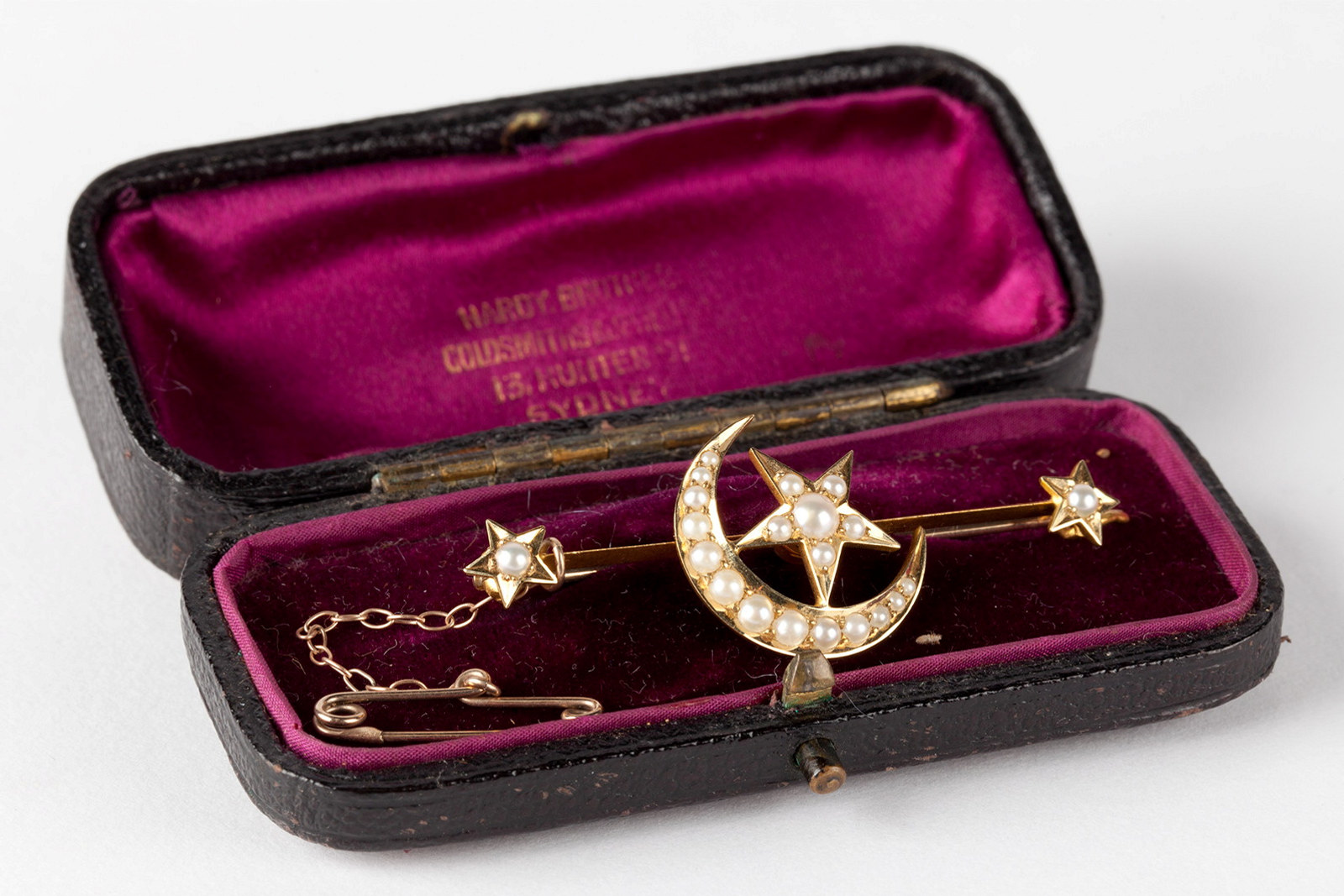
Baubles, brooches & beads
We wear jewellery as articles of dress and fashion and for sentimental reasons – as tokens of love, as symbols of mourning, as souvenirs of travel
